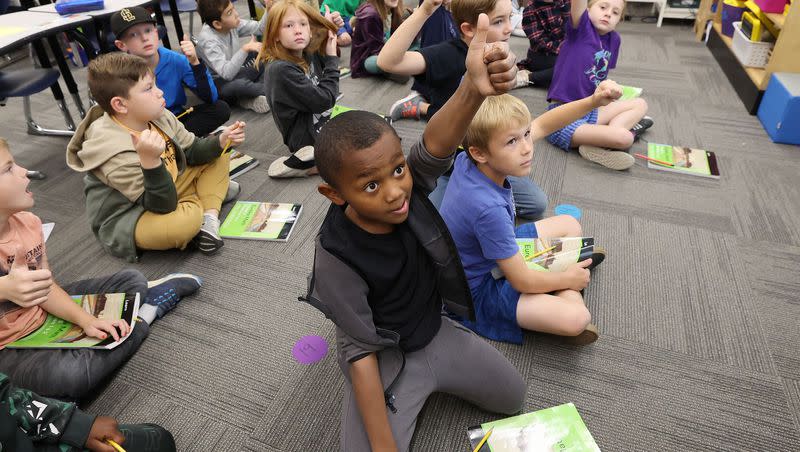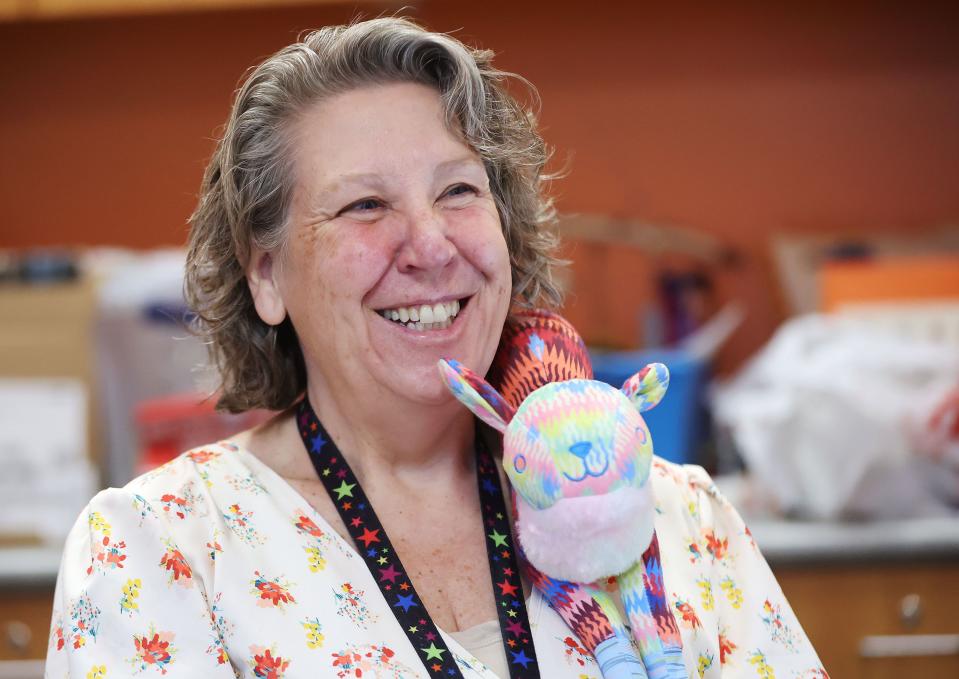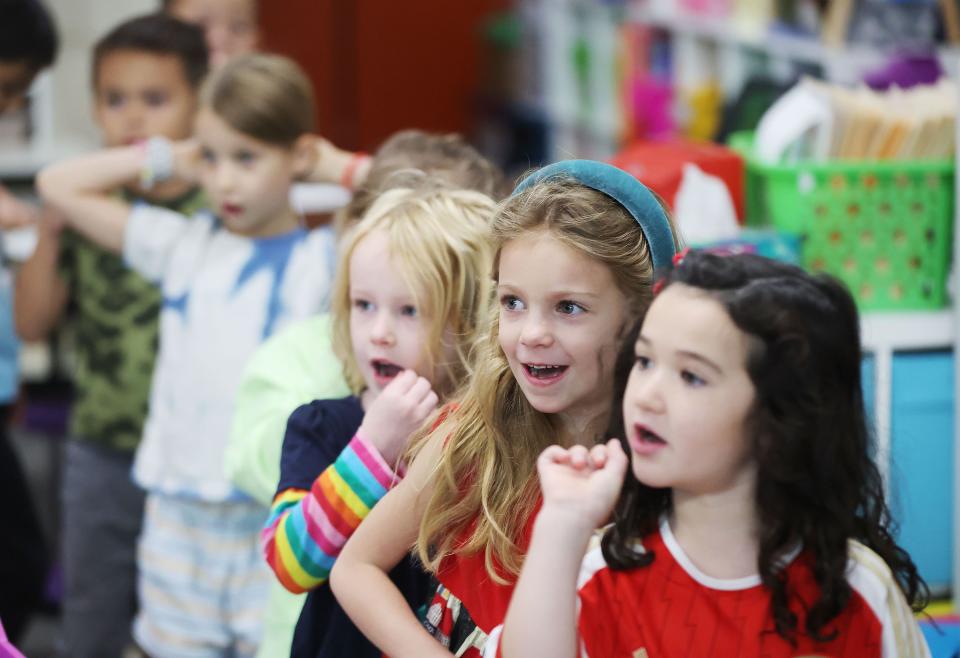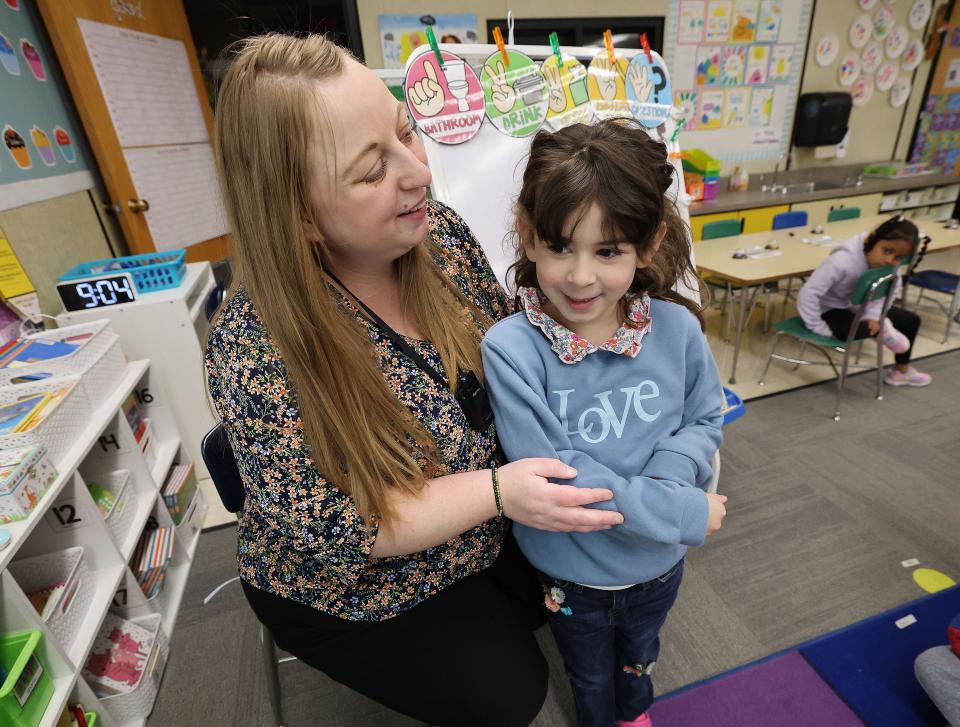The fascinating backstories of Utah’s two new National Blue Ribbon Schools

Being selected a National Blue Ribbon School by the U.S. Department of Education is heady stuff.
Education Secretary Miguel Cardona says the 353 schools recognized for 2023 “have set a national example for what it means to raise the bar in education.”
Among them are two elementary schools in Utah, Salt Lake City School District’s Wasatch Elementary and Beaver County School District’s Milford Elementary, just the 22nd and 23rd schools in Utah to earn the honor since the program started in the 1980s.
Both were recognized as exemplary high-performing schools in the state, according to results of state assessments or nationally normed tests. This is the second time Milford Elementary has been honored as a National Blue Ribbon School, the first time in 2011.
For Wasatch Elementary, the honor was bestowed as the school is being studied by the school district for possible closure, it along with six other elementary schools in the Salt Lake district. Districtwide, elementary school enrollment has declined nearly 30% over the last eight years, falling from 12,431 students in 2014, to 9,602 students in 2022.
Related
“It’s hard, because we know we’re doing really good things at our school,” said Adrienne Kumik, principal of Wasatch Elementary School.
“I understand there’s some things about our building that are not ideal, but the people in our building are wonderful. Our students are hardworking. Our staff is collaborative. I really do think that one of the things that has driven us to get this award is the amount of collaboration that we do at our school,” she said.
Kumik said she is especially proud of the school’s achievement emerging from the pandemic. “The growth we’ve had since COVID, it’s been really great. Our rebound after COVID, we’re at or above our pre-COVID numbers,” she said.
Asked if the school’s blue ribbon selection will factor into the school closure decision, Kumik said it’s hard to say.
“I don’t speculate on the closure thing at all because it’s been a roller coaster ride. Some days I wake up and I’m like, ‘We’re good. We’re not going to close. Full steam ahead.’ And some days I wake up and think, ‘We’re getting closed, and how are we going to deal with that?’ I’m trying to stay on the high end, just be positive that things will work out,” she said.
A school is not a building, said Kumik. It’s the people and the programs it offers.

Wasatch serves about 340 students. About one third of students live outside its boundaries and elect to attend the school, in part a nod to its renowned arts program, which reinforces academic learning in science and social studies, and its strong sense of community.
It is also in the process of becoming a STEAM school (science, technology, engineering, arts and mathematics), collaborating with the University of Utah.
Some of Wasatch’s students come from as far away as Tooele, Davis and Utah counties. Still others are students whose parents work in the city and choose to bring their children to the school, which was established in the 1880s. Still others are children whose parents attended the school themselves and want their children to go there, too.
About 32% of Wasatch Elementary School’s students qualify for free or reduced-price school lunch, according to its National Blue Ribbon School application.
About 16% of its students are English language learners, with more than a dozen languages represented in the school, including Dari, Arabic, Spanish, Russian, Mongolian, Mandarin, Bengali, Japanese, Somali, Hindi, Tamil, French, Ukranian, German and Navajo. All of the school’s teachers have English as a Second Language endorsements, so they have proven strategies to help reach all of their students, Kumik said.
As the school plans events to celebrate its National Blue Ribbon selection, the school closure study process is ongoing. The school board is tentatively scheduled to vote on school closures in December or early next year after a period of study and public input.
While the ongoing conversation and study are stressful to the school community, the school’s educators are focusing on their students and collaborations that strengthen instruction and make school memorable, Kumik said.
“We really talk a lot about what are the things that kids will remember 10 years from now, 20 years from now. Yes, we are doing direct instruction. Yes, we are teaching phonics. Yes, we are now using the best methods to teach math and we’re using all the best practices that we know to teach academics, but how are we also making those things really memorable and engaging for the kids?” she said.
Kumik said she looks forward to traveling to Washington, D.C., to learn more from other educators and to celebrate the honor with the school community.
“I have lots of bittersweet days where I’m super excited about the amazing work we’ve been doing and just different things that we’ve been incorporating into our school over the past couple of years to really focus on positive incentives for kids. At the same time, I’m nervous a lot about whether we’re going to get to continue moving forward with that,” she said.

Milford Elementary’s ‘turnaround’
Milford Elementary School is no stranger to national recognition. When Brian Hollingshead walked into the school for the first time as its new principal, the plaque from its first designation as a National Blue Ribbon School was on the wall in his office. It’s still there.
When he assumed the principal’s job seven years ago, the school had been singled out for an entirely different reason. It was a turnaround school, which meant it was among the lowest performing schools in the state. Such schools are provided additional resources with the expectation they improve academic achievement within three years or face other actions deemed appropriate by the State School Board.
“I’d never even heard of a turnaround school and that process to be honest with you. I obviously became very familiar with that my first year as principal. The teachers’ morale was probably at an all-time low of any school that I have been in,” said Hollingshead.
The school needed to correct its course, but Hollingshead said he knew he also needed to help build morale. He asked every person who works in the building about their favorite snack and drink. He regularly walks the halls of Milford Elementary pushing his “sunshine cart” to deliver the treats to staff members.
It might sound like a small thing, but Milford Elementary educators who helped the school apply for National Blue Ribbon School made a point out of mentioning it in their application.
“Our principal is also the team leader,” they wrote.
“He always makes sure he is present with any meeting with difficult parents or anything that might be confrontational. At the first of the year and at the end of the year, the principal takes us all out to lunch at a sit down restaurant here in town. He picks up the tab with his own money. We are all involved in the decision making for our school. He values our opinion,” the application states.
Hollingshead is quick to deflect attention away from him to the school’s teachers and staff.
“These are people who take a lot of pride in what they do. These were amazing teachers and staff and they didn’t like the fact that they were labeled a turnaround school. They wanted to improve and they took that to heart,” he said.
In a relatively short period of time, the school pivoted from one of lowest performing in the state “to super high performing and it was fun,” Hollingshead said.
It was, unquestionably, a lot of hard work digging through test data, examining instructional practices and striving to teach their curriculum to fidelity, he said.
“These teachers come early and stay late. They just work hard. They have a great work ethic,” he said.
Related
One of the highest performing elementary schools in Utah is off the beaten path and a Title 1 school
Milford Elementary is a small rural school that serves 215 students. It is a Title I school that has a diverse student body. Sixty-four percent of its students are white, but more than one-third are ethnic minorities, 28% of them Latino or Hispanic.
Fifty-four percent of its students qualify for free or reduced-price school meals.
Most people in the area work in agriculture. Among the school’s notable alumni are University of Utah backup quarterback Bryson Barnes and members of the Wright family, who have won six world titles in professional rodeo.
Evelyn Wright, “the mom of all the Wrights, teaches second grade here,” Hollingshead said.
While Milford Elementary isn’t facing school closures, rural schools have other challenges.
The school intentionally keeps class sizes small in lower grades “and that’s a huge benefit for us, but we have some classes that are combined out of necessity,” Hollingshead said.
So a first grade class might have 16 or 17 students, but an upper grade at the K-6 school might have 34 to 36 students to a classroom.
“I don’t know compared to other places, if they would consider 34 to 36 kids in the classroom a lot in elementary school, but we do,” he said.
As much as Hollingshead praises Milford Elementary’s teachers and staff for its reversal of fortune, he also credits the students and their families.
“They’re the true heroes of our school and we try to do what’s best for them. And a lot of schools say they want to do that and at times, I think they have a hard time putting that into practice in a way that’s meaningful. I hope our kids feel like they really are the stars of the school, that they are loved and cared for, and want to achieve high things,” he said.

Blue Ribbon qualification
State Superintendent Sydnee Dickson said the national recognition program started in the 1980s and schools have to qualify even to be considered for the honor.
“I’m just thinking back as long as I’ve been in this state office and I think we’ve only had three schools maybe qualify in any given year,” said Dickson, addressing the Utah State Board of Education recently.
“So it’s a very small size across the country of schools who qualify in every state and then once you qualify, you are invited to apply. I think that’s a really important point that it’s not just open to everybody and you get to apply, but you have to qualify. I can remember a couple of years that we didn’t have anyone who qualified,” she said.
Qualifying schools must prepare a rigorous application. Once it is submitted, the Department of Education asks for edits and there are frequent reminders about deadlines, Kumik said.
Wasatch Elementary’s Assistant Principal James Smith told the state school board that he viewed applying for the school recognition program as an extension of his professional development as he and Kumik examined the school’s data, systems, and identified areas of need and improvement.
“Throughout this process. We also continuously came back to how supportive our staff is and how awesome our staff is, as well as our community. Not only did we get this awesome recognition, but we became stronger as a school,” he said.

